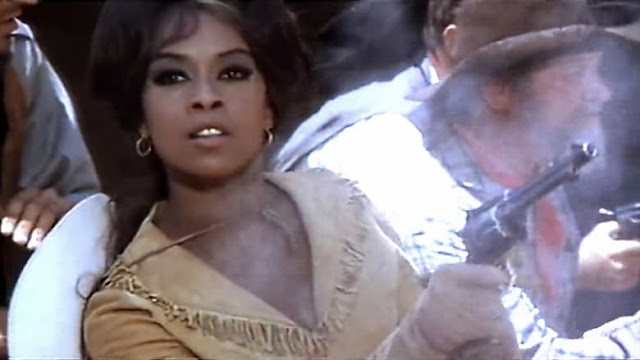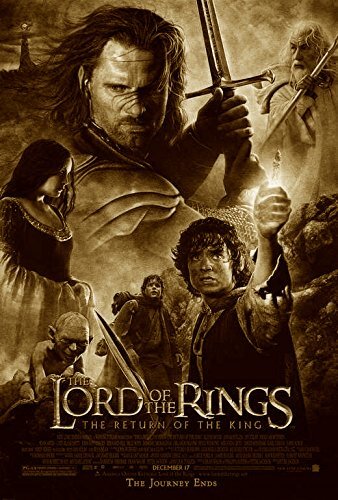PHENOMENALITY: *naturalistic*
MYTHICITY: *poor*
FRYEAN MYTHOS: *adventure*
CAMPBELLIAN FUNCTIONS: *sociological*
I never liked video stores for their mainstream items, but for the many oddball flicks that the store managers certainly purchased just to fill empty shelves. Those venues are gone now, but their spirit lives on in streaming services like FLIX, which is where I saw this film. LOLA COLT, starring singer-actress Lola Falana, was an elusive "spaghetti western" that afficionadoes couldn't seem to locate in the eighties and nineties, from what I could learn. For the past twenty years I forgot I'd ever wanted to see it, but something prompted me to go looking-- and there it was. In fact, the FLIX copy didn't even suffer the cuts mentioned in IMDB reviews.
In America the so-called "blaxploitation" genre didn't take off until 1970's COTTON COMES TO HARLEM, though that film had been preceded by a few movies and TV shows that focused on heroic or quasi-heroic black characters in ensembles, including those played by Bill Cosby in I SPY (1965), Greg Morris in MISSION IMPOSSIBLE (1966), and Jim Brown in THE DIRTY DOZEN (1967). Yet Italy had a tiny smattering of heroic black characters in films, albeit in support roles in films like TAUR THE MIGHTY and MOLE MEN AGAINST THE SON OF HERCULES. I'm not aware of any female black heroes in Italian cinema prior to LOLA COLT, any more than appear in any other national cinema. Thus I don't know what led some production company to invest time and money making Lola Falana into the first such heroine, beating out Pam Grier's THE BIG BIRD CAGE by five years. (I don't count Grier's appearance in 1971's BIG DOLL HOUSE, where she's not any sort of heroic figure.)
From the one or two short reviews I'd seen of the film, no one seemed too impressed by COLT-- and sure enough, it's a crude, disjointed oater by director/co-writer Siro Marcellini, whose most notable credit is probably writing and directing 1963's BEAST OF BABYLON AGAINST THE SON OF HERCULES. The most unusual aspect of COLT is that it doesn't present a protagonist modeled on the Sergio Leone persona of a money-hungry (but good looking) scofflaw. Possibly Marcellini didn't think such a persona would work for a female hero, since she's nearly as virtuous as any standard Hollywood Western crusader.
Lola is a showgirl traveling with three others in a stagecoach, but the girls are forced to stop in the small town of Santa Anna. It might be near the Mexican border since various characters have Mexican names (though everyone looks pretty European to me, particularly a blonde boy named Pablito). One showgirl has become sick, and the others seek a doctor. Though there's no licensed physician, there is a medical student, a handsome fellow named Rod (Peter Martell) who becomes the sick girl's caregiver. The local biddies don't like the presence of the showgirls, but a saloon-owner gives the shady ladies lodgings in exchange for a singing-and-dancing performance.
However, even before Lola (the only one who performs) gets on the stage, she becomes aware that Santa Anna suffers repeated attacks led by a bandit named El Diablo (German Cobos). Diablo is pressuring the people of the town to sign over their land to him, and he's terrorizing them for that purpose. However, he's taken an odd course to make sure they don't fight back, having abducted an assortment of hostages, whom he keeps jailed at his ranch. Why he didn't just make the landowners sign their property away as soon as he kidnapped their relatives et al-- the script does not say.
Both Doctor Rod and El Diablo take a liking to Lola, particularly after seeing her dance in a skimpy one-piece. Diablo invites Lola to his ranch, where he reveals that his name is the very waspy Larry Stern. Lola lambastes the doctor for the townsmen's unwilligness to fight back, because Lola herself had suffered the depredations of outlaws who killed everyone in her family but her. Still, Lola tries to find a way to undermine Diablo out of a general sense of justice, doing her best to con him without giving up any goods.
Lola eventually leads the townsmen to free their relations, but while the film's building up to that heroic act, the script fills time with long, reasonably well-done fistfights between Rod and Diablo and between Rod and Diablo's main henchman. Most of the other characters are bare stereotypes, though a secondary conflict arises when Rod's local girlfriend Rose gets jealous of the almost-doctor's attentions to Lola. COLT has the minor distinction of being an early Western that ends up validating a white-black romance.
How does Lola Gate stack up as a heroine? Well, she knows how to handle a pistol, though she only shoots two villains in the concluding raid, as well as clubbing two guys with her gun-butt. She's more important to the story as an inspirational figure, so again the last fight with Diablo goes once more to Handsome Doc Rod. I'd still count Lola as a combative protagonist, though Falana's performance is flat and unimpressive, with Martell and Cobos providing the best acting. No one overtly remarks on Lola's skin-color, and even the old biddies are on her side once she liberates the community, so it's hard to say if the filmmakers had any thoughts of responding to civil rights issues with the film. The only time the movie moves even slightly toward the sort of delirious scenes found in good Italian westerns is a late scene in which Lola's next-to-last song in the saloon has her in white robes warbling "Swing Low Sweet Chariot." Yet moments later she flings off the robes, revealing another scanty one-piece and singing another torch song. She's still a showgirl when she leaves with her friends, and when Doc Rod follows her, he seems to join her entourage. (Yeah, that'll work out.)
The sole aspect of the film that justifies (however slightly) my "bizarre crimes" trope is the main villain's odd kidnapping ploy.


















